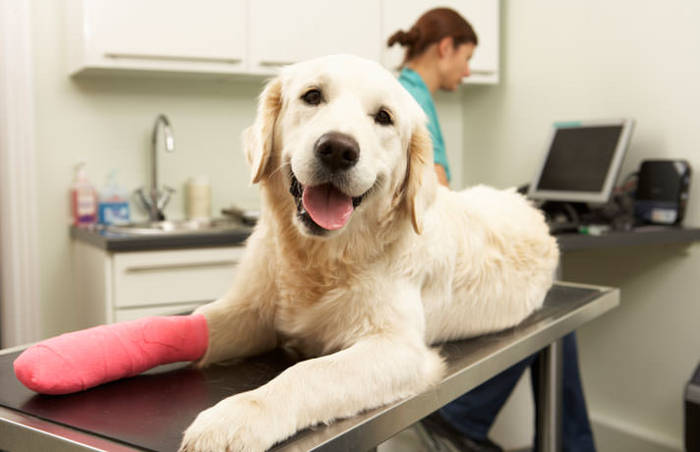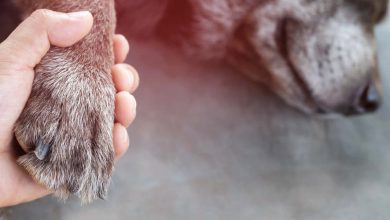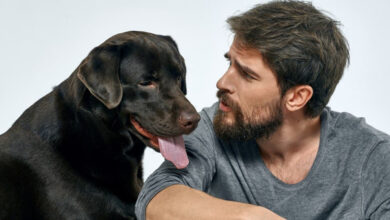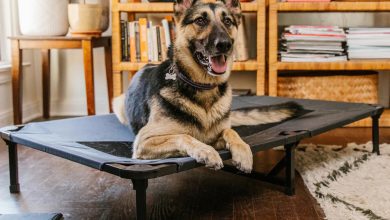What to Expect After Neutering Dog

Neutering a dog is becoming a popular practice. It’s a great way to prevent your pet dog from needlessly mating. Also, a neutered dog is at a lesser risk of contracting diseases and becomes well mannered. Despite all the advantages of neutering, people are still quite hesitant about going through with the operation. Neutering your dog means placing them under the knife. It goes without saying that pet parents find the thought of their pooch being operated on rather scary. Pet parents worry about what to expect after neutering a dog. Questions about successful recovery, possible side effects, and potential mishaps are bound to be asked.
Neutering is a fairly simple operation, meaning that there’s hardly any chance of anything going wrong. However, we’re still going to address the question about what happens after the surgery has been completed. Whether you’re a pet parent who’s considering this surgery or you’ve recently had your dog neutered, you’ll find the information in this article quite helpful.
Before we begin discussing the after-effects of neutering, let’s first explore this procedure a bit.
More...
What is Neutering?

Neutering is a surgical procedure that makes male dogs sterile. It shouldn’t be confused with the female variant of this surgery (spaying). Compared to spaying, neutering is much safer and less invasive as well. The purpose of both of these procedures is similar; to remove a dog’s reproductive organs. Doing so makes sure that your dog is no longer able to breed. Along with becoming sterile, dogs also become more docile as they no longer feel the urge to breed. Anyone who has owned a dog will know how annoying dogs become when they’re in heat.
How Does The Process Work?
To neuter a dog, its testicles need to be removed. To do this, an incision needs to be made into their scrotum. This exposes the testicles and allows for their extraction. In most cases, the incision is so small that sutures aren’t even needed.
The process starts with a thorough medical examination of the dog. This involves blood work, identification of any health conditions, etc. to make sure that your dog is physically fit enough for the operation. We’ve already talked about the details of knowing whether your dog is fit enough for this operation in another article.
Once a dog has been cleared for the procedure, you can move onto the next step. To make sure that there aren’t any complications during surgery, it’s best to find a reputable vet. Any invasive surgery should be performed in a controlled and sterile environment. Sadly, there have been instances where unprofessional vets are careless about such details. You want to make sure that incredibly capable hands are operating on your dog. Hands that realize that they’re responsible for the life of your dog. The best way to find a reputable vet is to ask for their certifications and look for customer reviews on their website. You can also look for referrals on pet forums.
After locating a vet and setting an appointment with them, you’re almost ready for the surgery. Before you drop your dog off at the vet, you need to carefully follow any instructions that you may have received from the vet. Usually, your vet will ask you to make sure that your dog hasn’t had any food 8 hours before the surgery. Sometimes your vet will provide more instructions as well. Make sure that you follow all of them to ensure a smooth operation.
When you drop your dog off at the vet, you’ll only need to be apart for a couple of hours. This surgery takes very little time, and most patients get cleared for going back home on the same day. Your dog will be given general anesthesia to make it fall asleep. The primary effects of this anesthesia last for about 20 minutes. While your dog is under, the vet will prepare its genital area for surgery. The prepping stage involves shaving your dog’s fur around the genital area and sterilizing it. Once that’s done, a small incision is made on the scrotum. Your dog’s testicles are extracted through this incision, and their connecting tubes are cut. This effectively removes your dog’s reproductive organs.
The incision is then closed, sometimes sutures are required. Once the surgery is completed, your dog is carefully monitored for the next 30 minutes. During this time, the vet ensures that your dog wakes up from the anesthesia without any complications. Your pet will be kept in the clinic for a couple of hours to make sure that everything is fine. Once your vet calls you and gives you the green light, you can pick up your pooch and take it home. The recovery period lasts from 10 to 14 days.
Once your pooch is back home, the aftercare part of the surgery begins. This is where we’re going to address the main focus on this article as well.
What to Expect After Neutering a Dog?
Behavior
When you pick your dog up, the first thing that you’re going to notice is grogginess. While the effects of anesthesia wear off in 20 minutes, the side effects can last up to 7 hours. The exact amount of time it takes a dog to wear off anesthesia completely varies from dog to dog. Some dogs are more sensitive to anesthesia than others. Grogginess and a general lack of energy isn’t anything to be alarmed about. Your dog may also face appetite loss while it’s recovering from the anesthesia. The best way to deal with this situation and minimize any discomfort for your pet is to let them rest. Provide your dog with a warm and dry place where they can lie down and rest. Try offering them food until they feel like eating again. A well balanced, homemade meal (like the ones mentioned here) is recommended to ensure a speedy recovery.
Some dogs become emotionally upset after undergoing surgery. This is mainly due to stress and separation anxiety. Your dog may be in a bad mood when you pick it up. Seeing your dog in a bad state like this shouldn’t alarm you at all. Just stay calm and give them time to recover. After resting in a familiar place for a dozen hours or so, your dog will get back to normal.
A great thing about this surgery is that your dog will feel little to no pain while recovering. However, irritation and itchiness are going to be present in the area. You may find your dog licking its genital area more often in the first couple of days. While this is normal, aggressive licking or scratching can be bad for the wound. If your dog starts interacting with its wound too much, consider putting an Elizabethan collar on them.
The day after the surgery is going to be like any other normal day would be. You can feed your dog its normal diet and take it on walks as well. However, there are going to be certain instructions provided by your vet that must be followed. These instructions ensure that the operated area doesn’t become irritated. Your biggest responsibility as pet owners during the recovery phase will be to make sure that your dog’s operated area doesn’t become infected. Infections are the worst enemy of healing wounds and can complicate recovery.
The Operated Area
Immediately after your dog’s surgery, the first thing that you’ll notice is that despite the testicles being removed, the scrotum seems full. This is due to swelling in the area. This is a common side effect and nothing to be alarmed about. The swelling should begin to reduce after the first few days of recovery. You will also notice that the area around your dog’s genitals has been completely shaved. Their exposed skin may also have some razor burns on it. Again, this is nothing to be worried about. The razor burns will heal, and your dog’s fur will grow back in no time. Some vets like to leave small tattoos on the operated area to indicate that the dog has been sterilized.
Depending on the size of the incision, your dog’s wound may need to be stitched closed. This is done with non-dissolvable sutures. These sutures are removed after the 10 to 14 days recovery period.
A normal, well-recovering wound will be slightly swollen without any redness. It should also be dry and shouldn’t discharge blood or any other fluids.
Keeping The Operated Area Safe
Following these steps will ensure that the wound doesn’t get disrupted in any way.
- Keep your dog’s activity level to a minimum. Prevent your dog from jumping around or getting into play fights with other male dogs. A dog crate may be needed if your dog refuses to stay put.
- Don’t bathe your dog throughout the recovery phase. Water can irritate the wound or upset any present sutures.
- You also need to make sure that the area around your dog’s wound. Not being able to bathe your dog may make this challenging. You can prevent your dog from rolling around in the dirt and mud. Also, using antimicrobial wet wipes to gently clean the area around the wound is a good option.
- Make sure to inspect the wound on a daily basis. Swelling will be present in the first few days. However, excessive redness, discharge from the wound, or upset sutures are a cause of concern. If you notice any of the following, take your dog to the vet immediately. The first two are especially alarming as they may indicate the onset of an infection.
A Week After The Operation
The first week of recovery is going to be the most crucial one. This is when your dog’s external and internal wounds are healing. During this time you need to make sure that nothing disrupts the healing process. This means no activities that may subject their genital area to stress. Make sure to feed your dog quality food so that their body gets the nutrition it needs to heal.
After a week has gone by, you’ll notice that the wound will have settled down quite a bit. If the wound has been stitched then seeing slight swelling along the stitches is normal. Keep in mind that you must check your dog’s wound on a daily basis during this time as well. Another thing to keep an eye out for is any adverse behavior changes. If your dog continues to lose its appetite or seems to have stomach problems, then you should consult your vet. Gagging, vomiting, coughing, and diarrhea are all normal in the first 24 hours after surgery. However, if your dog continues to experience these problems, then you should be concerned.
14 Days After The Operation
Provided that you didn’t run into any complications during the recovery process, your dog should have completely recovered after 14 days. Taking your dog for a checkup after they have completely recovered is a good idea. If your dog had sutures on its wound, then you’ll need to take your dog for their removal as well.
Once your dog has completely recovered, you can let them follow their normal routine. There aren’t any lasting side effects of this surgery other than your dog becoming sterile. You won’t notice any drastic, personality changing behaviors either. The only notable behavior change will be a decrease in aggression and a lack of territorial behavior. Also, your dog will no longer become restless during its mating cycle. Best of all, you will no longer have to worry about annoying, hormone-driven actions.
Conclusion
Overall, neutering is an incredibly safe surgical procedure. It’s recommended to a majority of pet parents with a male dog. The simplicity of the surgery and its list of benefits makes it a great option. Just like with any other surgery, post-surgical care is really important here. You need to ensure that your dog gets the care that it needs to heal properly. The recovery period usually lasts for 10 to 14 days. During this time, you must carefully follow any instructions provided by your vet. Doing so will ensure a speedy recovery and minimize the chances of any infection occurring.



